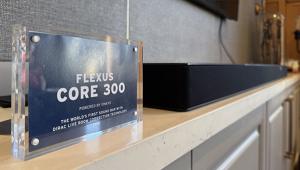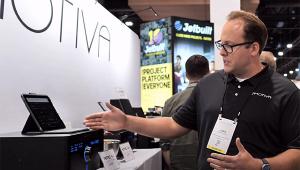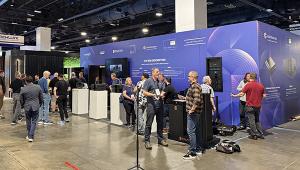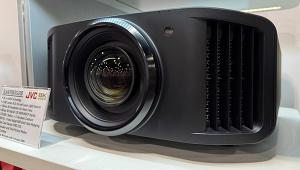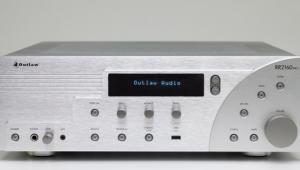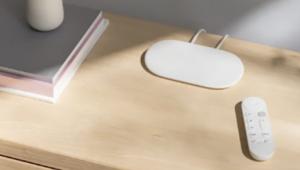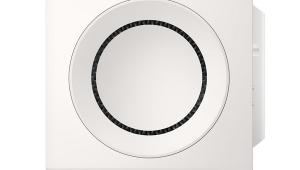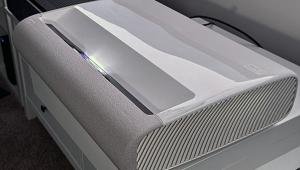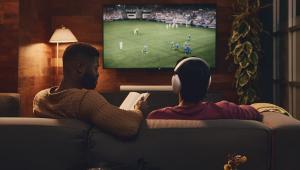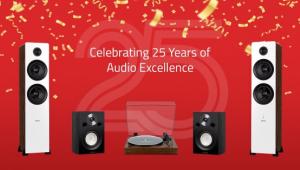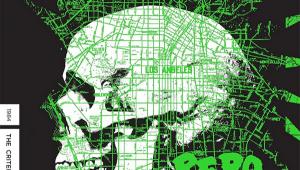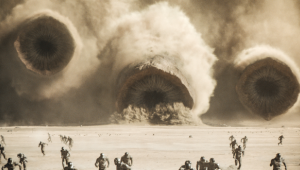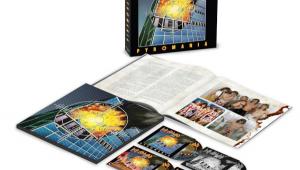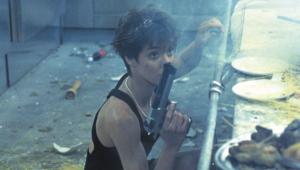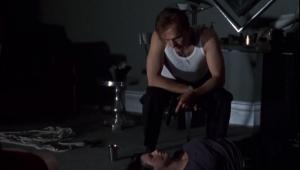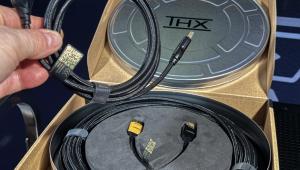StormAudio's Superb CEDIA Demos Revisited
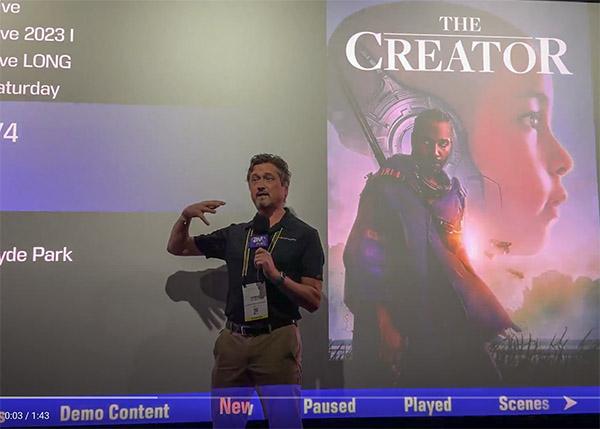
Check out the video, or read the edited transcript below.
Mark: Well, here we are.
Gary:This is cool, right?
Mark: Yeah, it is cool. What's up, Gary? How you doing? Man, this is day three of CEDIA, the last day. The day that you get to actually sit down, maybe do some demos because it's not as busy.
Gary: That's right.
Mark: And it's also the day when you kind of know what's going on, what's cool.
Gary: That's right.
Mark: And you guys must have gotten some feedback already about what you're doing.
Gary: Oh, absolutely. We came in really big this year. We have eight active demos, two of the rooms we're big sponsors in. So yeah, it was a big lift to get all these rooms operational and sounding as good as they could.
Mark: Wow. Eight?
Gary: Yes, eight.
Mark: Okay, so that must cover quite a range of applications and price points.
Gary: That's the best part of what you see on the floor this year, is that we have everything from the million-dollar theaters, which you would expect to be just crazy amazing. But in this room particularly, we wanted to do something much less expensive. So even though this is still a pricey room, a six-figure room, we're talking $150,000 versus a million dollars. And we'll do a demo here in a minute. I think you'll agree. Wow, this is a lot of bang for the buck, is the best way to describe it.
Mark: I hear you. Yeah, I see. Okay, so you're using PMC speakers in here, and you're using the StormAudio AVR to power them. Is that right?
Gary: That's correct. So we're basically using PMC speakers. We chose them purposely because with our processor, we have all these calibration tools, and one of them is Dirac Live’s Active Room Treatment. If you give Active Room Treatment more horsepower for the sides and rear channels, now it can really eliminate those bass resonances that most systems have. That’s the reason for this design.
Mark: I mean, those are some very substantial surround speakers.
Gary: Yes, they are. They're flat to 32 hertz, so we're basically using them from 32 to 150 Hz to do the bass for a good bass extension and also to correct the bass in the room. Now coupled with that are the new JL Audio CTS subs. JL is known for their subwoofer technology, but they’ve never had really big in-wall subs with a little more cabinet space where you could get a little deeper bass out of them. That's what this new CT Series gives you.
Mark: Oh, I can see that. Yeah, they don't take up that much space, but you have to be able to do the deep stuff these days.
Gary: Absolutely. Bass is hard to get right in a room and make it sound good because of the length, width, and depth of the room. Our technology, built into our processors, is able to dial that in a really profound way, eliminating room effects. We want to hear the speakers and the content the artist intended, but not the room itself.
Mark: It may not be clear to the audience that within the realm of room correction, bass is the most difficult to solve.
Gary: That’s correct. We're using Dirac Live with bass control to achieve that.
Mark: So Dirac Live has two modules—bass control and active room treatment. Bass control dials the subs in and phase aligns them, while active room treatment eliminates resonance.
Gary: Exactly. The bass response is even, and the mids and highs remain clear because the bass isn't coloring it.
Mark: That's really cool. So, all eight systems you’ve set up here are calibrated like this?
Gary: That’s right. Every system is dialed in to maximize the room’s potential.
Mark: I’d love to get a demo. Shall we?
Gary: Let's do it.
Mark: Now I’m sitting next to Jim from Lumagen. I just watched a clip, and the picture quality was fantastic. It wasn't like the typical film grain reproduction you see in digital systems—this was truly cinematic. Can you tell me more?
Jim: We’re showcasing the Radiance Pro 5244 here, and our goal is studio reference quality. It’s used in post-production at major studios for quality checks. Directors and producers prefer Lumagen because it preserves the director's intent.
Mark: So it’s not just about director’s intent, but now it’s about director’s choice—they're choosing Lumagen.
Jim: Exactly. One major producer has six Lumagens in his homes and even on his yacht. The preference from the industry speaks volumes about our quality.
Mark: Impressive! So, tell me about your new product.
Jim: We introduced the 4140, a one-in, one-out model. It’s been requested especially in Europe. It retails at $5,495, and it opens up a more affordable price point for our customers.
Mark: Very cool. And I know Lumagen is known for dynamic tone mapping.
Jim: Yes, we've spent five years refining tone mapping for HDR, particularly for projectors. It's a challenge because projectors often have lower brightness compared to the 4,000-nit monitors used for editing.
Mark: I appreciate the detail and dedication behind your work. Thanks for the explanation, Jim.
Jim: My pleasure, Mark. Glad you're enjoying the show.
Mark: And now, I’m magically sitting next to Chris Seymour. The picture quality looks fantastic, and a lot of that is thanks to the screen.
Chris: Yes, the Enlightor Pro material. This is the first time we’ve shown it at any trade show. It’s DCI-rated, de-speckled, and can be custom-ordered up to 40 feet wide.
Mark: I was blown away by the demo. What feedback are you getting?
Chris: It's been fantastic. De-speckling works especially well with Christie’s RGB laser projectors. We’re showing a wide variety of content with no visible artifacts—just perfection.
Mark: Great work, Chris. Thanks, and enjoy the rest of the show.
Chris: Thank you, Mark!
- Log in or register to post comments
